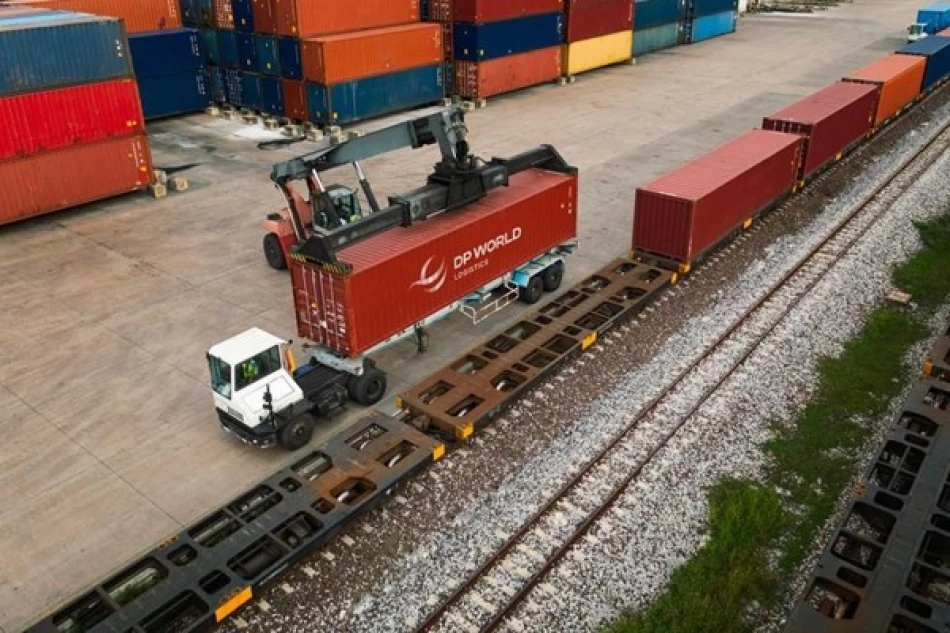
Dubai Ports World Generates Remarkable AED 41.14 Billion in Half-Year Revenue
DP World Defies Global Trade Turbulence with 20% Revenue Surge
Dubai Ports World (DP World) has delivered a striking 20.4% revenue increase to AED 41.14 billion in the first half of 2025, demonstrating remarkable resilience amid ongoing Red Sea shipping disruptions and mounting global trade tensions. The performance signals how strategic infrastructure investments and geographic diversification can shield major logistics operators from geopolitical headwinds that continue to reshape international commerce.
Strong Operational Growth Despite Regional Challenges
The Dubai-based port giant's robust performance stems from exceptional growth in its core ports and terminals division, bolstered by recent strategic acquisitions. EBITDA climbed 21.4% to AED 11.131 billion, while container handling volumes increased 5.6% on a like-for-like basis to 45.4 million twenty-foot equivalent units (TEUs) across its global portfolio.
These figures are particularly impressive considering the persistent closure of Red Sea shipping routes—a critical artery for global trade that typically handles 12% of worldwide commerce. The ongoing disruption has forced carriers to reroute around Africa, adding weeks to journey times and billions in additional costs to global supply chains.
Strategic Positioning Pays Dividends
DP World's container terminals handled 27.4 million TEUs directly, marking a 7.5% year-on-year increase. This growth reflects the company's strategic positioning across key trade corridors, allowing it to capture diverted cargo flows as shipping lines seek alternative routes and reliable hub operations.
Aggressive Expansion Despite Uncertainty
Rather than retreating amid global trade volatility, DP World is doubling down on expansion. The company deployed AED 3.97 billion in capital expenditure during the first half and plans to invest AED 9.18 billion throughout 2025—a bold commitment that underscores management's confidence in long-term trade growth.
Global Investment Portfolio
The investment blitz targets critical infrastructure across multiple continents, including expansions at Dubai's Jebel Ali Port, India's Tuna Tekra container terminal, the UK's London Gateway port, and Senegal's Dakar port. This geographic spread mirrors strategies employed by Singapore's PSA International and China's COSCO Shipping Ports, which have built resilience through diversification.
Notably, DP World is also investing heavily in digital capabilities and supply chain integration through its logistics subsidiaries, positioning itself as a comprehensive trade solutions provider rather than merely a port operator.
Market Implications and Strategic Outlook
DP World's performance offers several key insights for investors and industry observers. First, the company's ability to grow volumes and margins simultaneously suggests strong pricing power—a critical advantage as global shipping costs remain elevated. Second, the aggressive capital deployment indicates management expects current trade disruptions to create lasting shifts in global logistics patterns.
Competitive Advantage Through Integration
The company's cargo clearance platform now covers approximately 300 locations and handles over 90% of global trade routes, creating a network effect that becomes increasingly valuable as supply chains grow more complex. This integrated approach differentiates DP World from pure-play port operators and positions it to capture higher-margin logistics services.
Resilience in an Era of Fragmentation
CEO Sultan Ahmed bin Sulayem's comments highlight a crucial dynamic: while trade tensions and tariff uncertainties dominate headlines, the fundamental need for efficient logistics infrastructure continues growing. The company's success amid Red Sea disruptions and geopolitical tensions suggests that well-positioned logistics providers may actually benefit from global trade fragmentation, as shippers prioritize reliability over pure cost optimization.
This performance positions DP World favorably as global trade patterns potentially undergo permanent restructuring, with companies seeking to diversify supply chains and reduce single-point-of-failure risks. The port operator's geographic spread and integrated service offerings make it a key beneficiary of this "supply chain resilience premium" that has emerged post-pandemic.
 Layla Al Mansoori
Layla Al Mansoori







